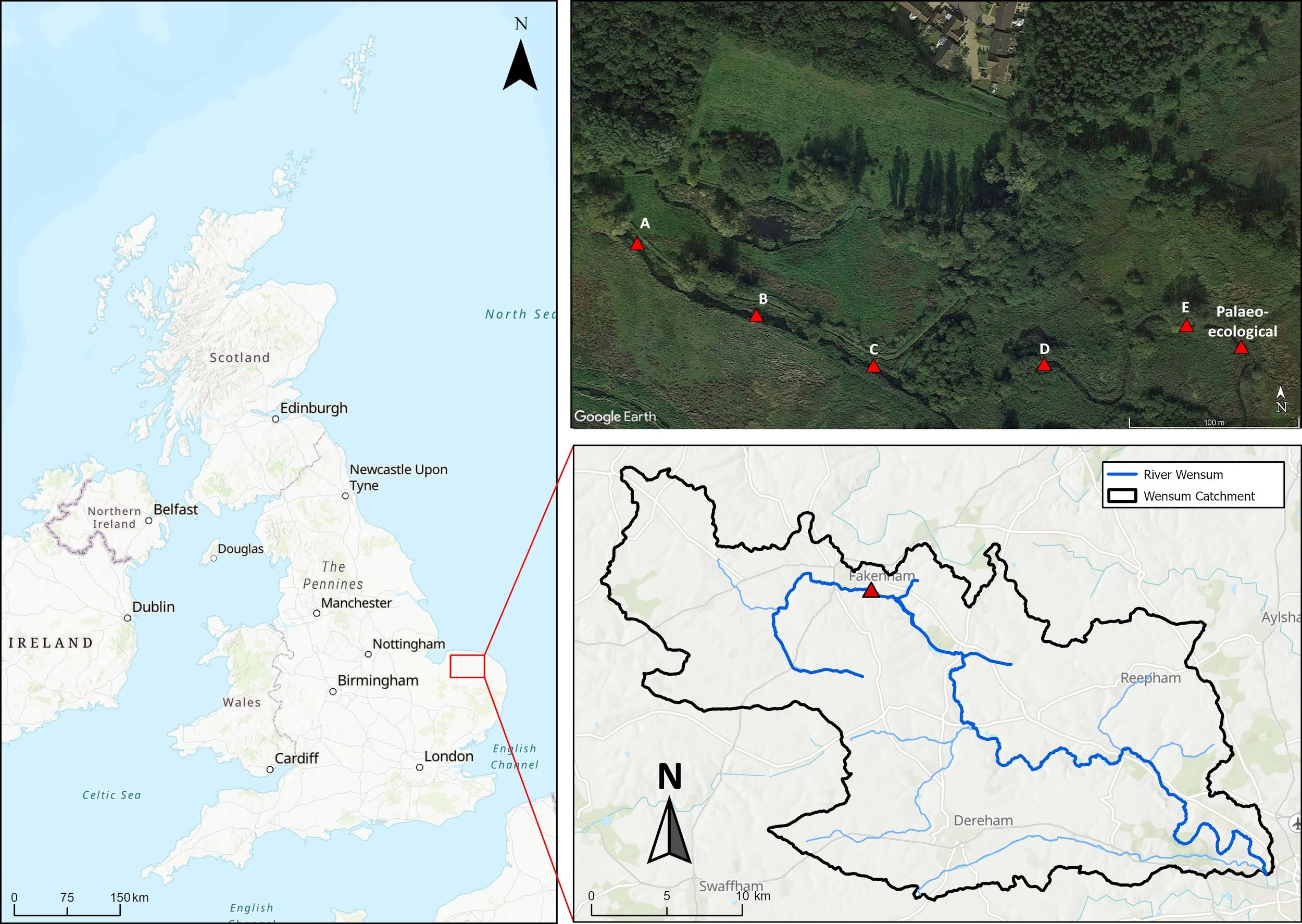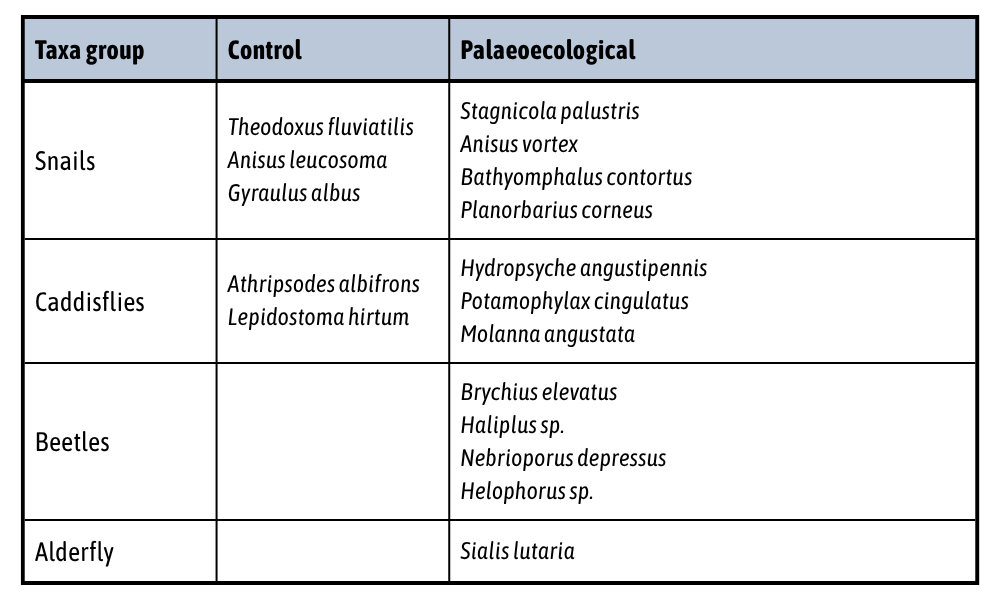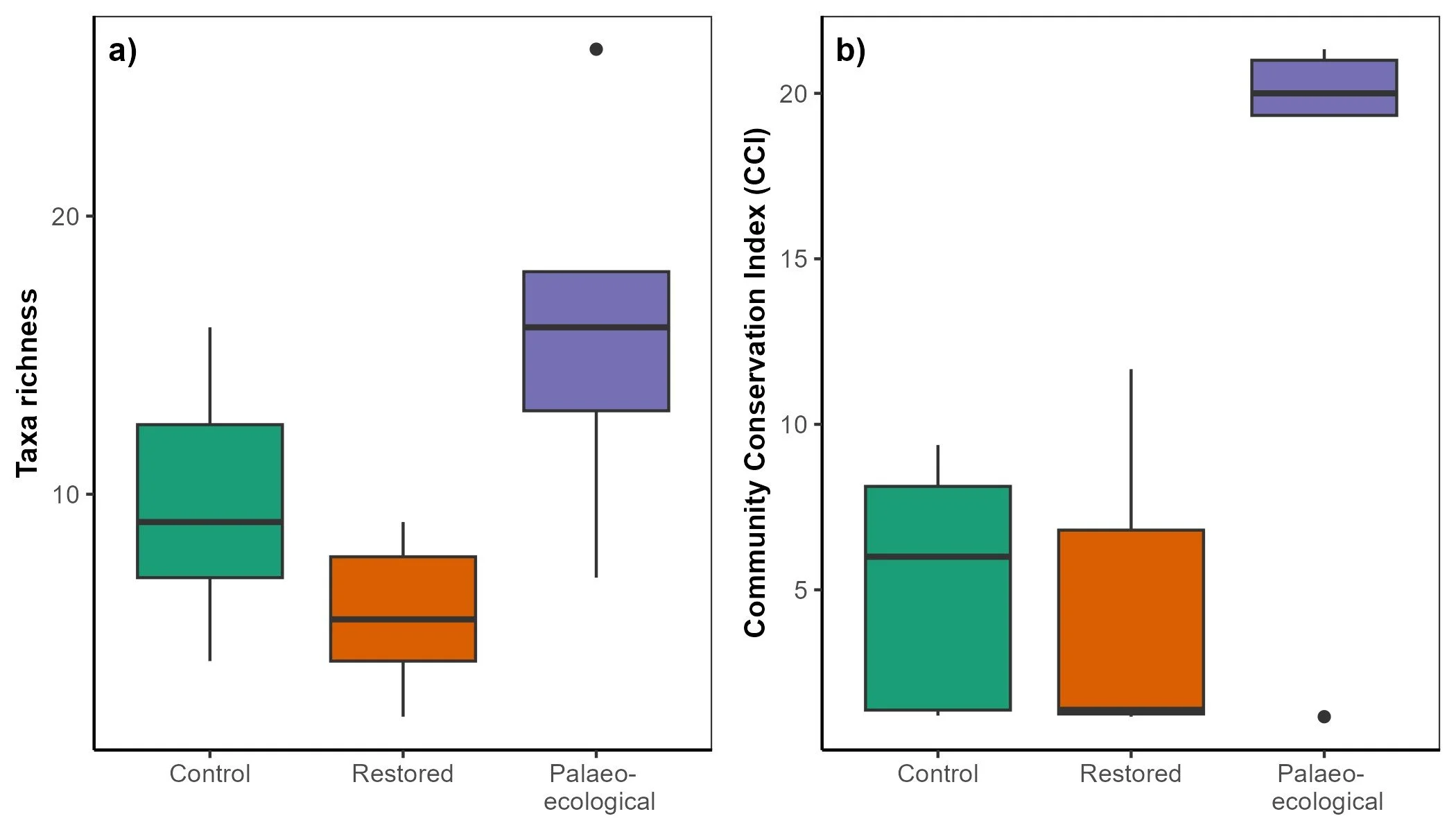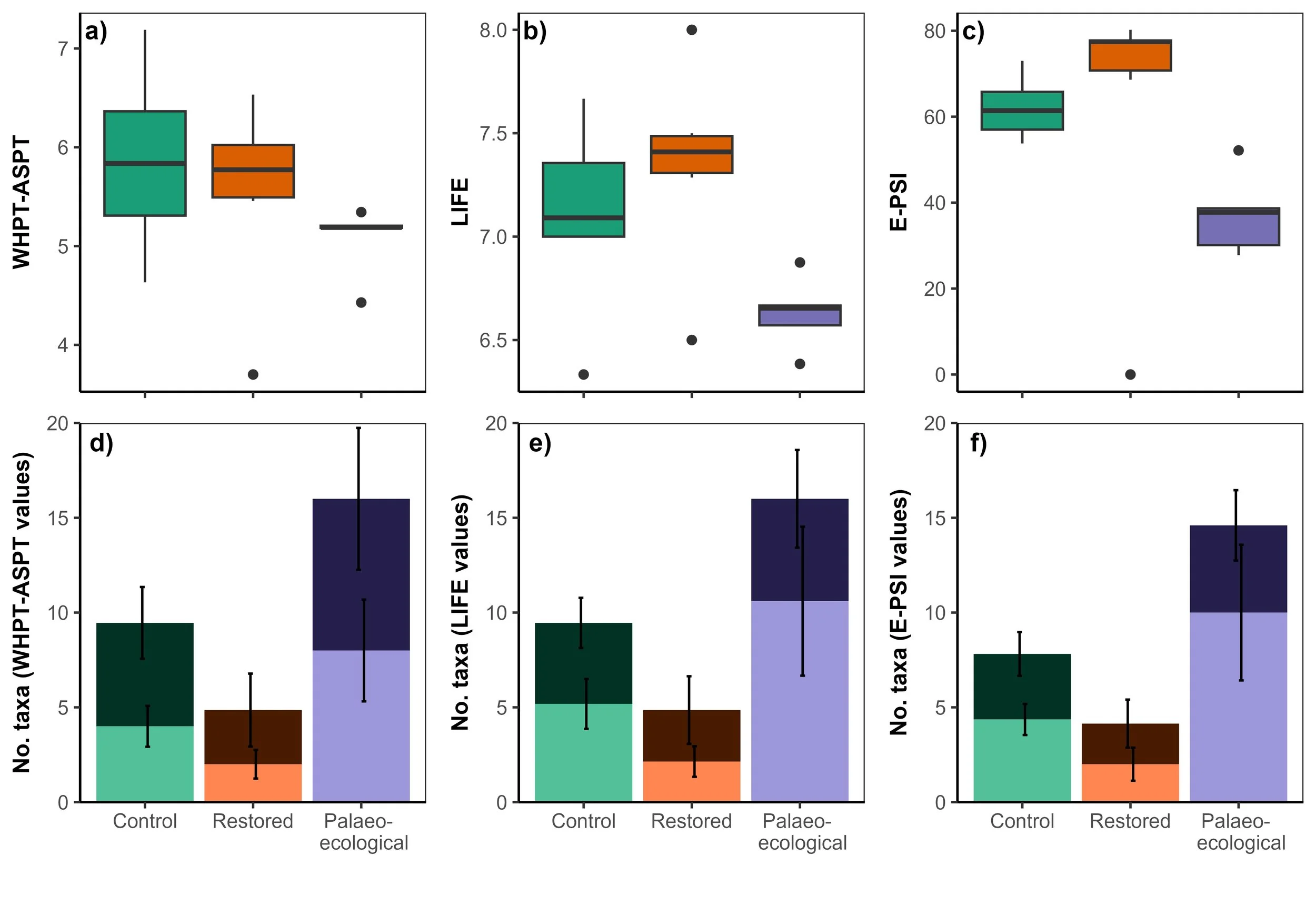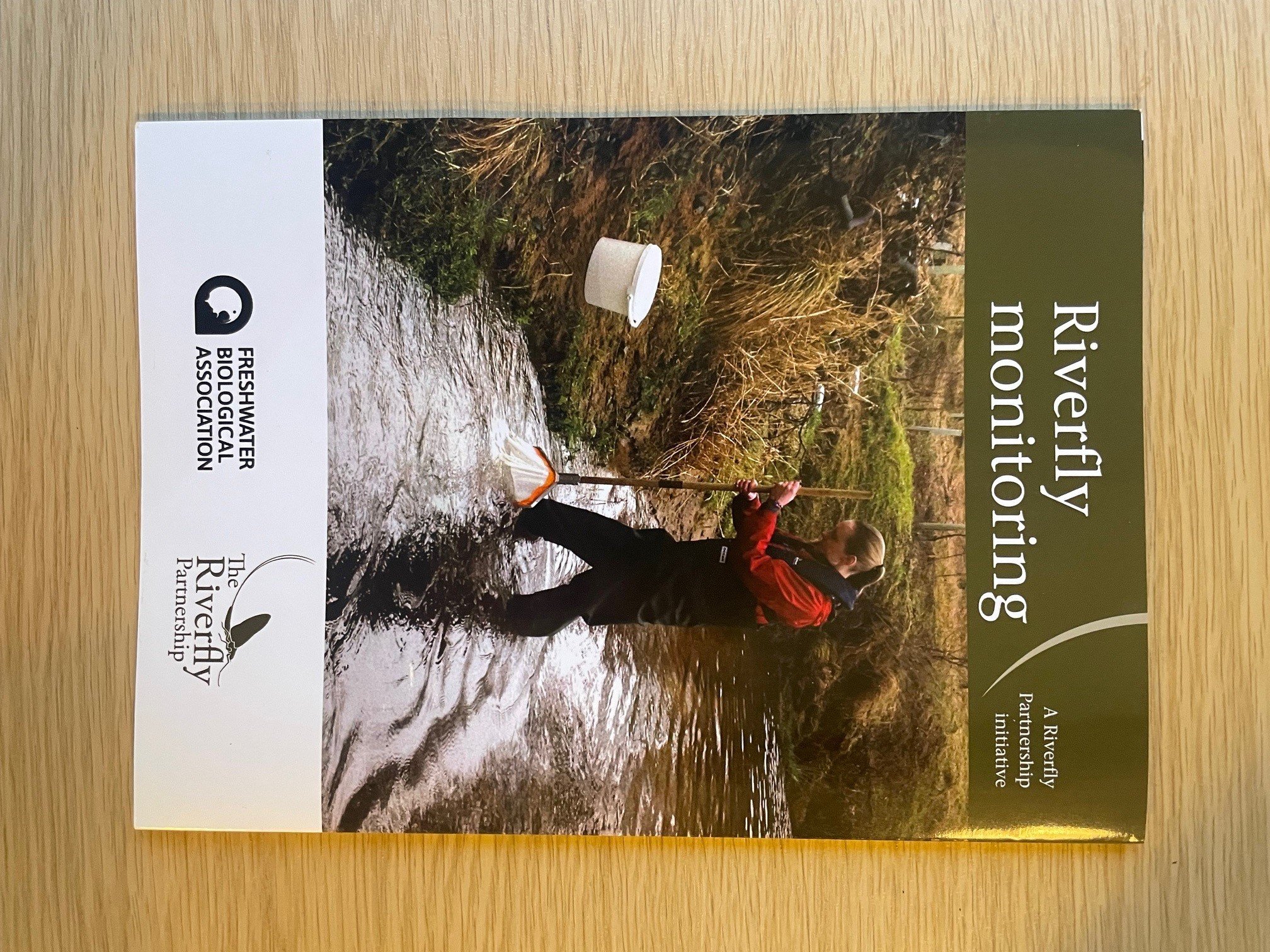Exploring the past to restore our rivers: Insights from the River Wensum
16 June, 2025
James White (1,2), Emma Seddon (3), Matthew Hill (4), Kate Mathers (3), Molly Bridger (3), David Hannah (1,2) & Paul Wood (3).
(1) University of Birmingham; (2) Birmingham Institute for Sustainability & Climate Action; (3) Loughborough University; (4) Harper Adams University.
James White is a research fellow specialising in water sciences at the University of Birmingham. Here, James and colleagues report their collaborative research in which palaeoecological data were used to contextualise freshwater ecosystem recovery following a river restoration project. This article summarises the research presented by White et al. (2025), which formed part of a wider special issue on river restoration practices.
Edited by Rachel Stubbington, Nottingham Trent University
Rachel is both a Fellow of the Freshwater Biological Association and long-standing Editor of FBA articles. If you would like to submit an article for consideration for publication, please contact Rachel at: rachel.stubbington@ntu.ac.uk
Introduction
Rivers are subjected to various human pressures that have caused drastic freshwater biodiversity declines globally (Tickner et al. 2020). This includes physical habitat simplification, whereby many river channels have become unnaturally straight and over-deep (‘canalised’) systems disconnected from their floodplains. River restoration practices are being undertaken worldwide to reinstate natural physical features and processes. Such practices can entail removing infrastructure like dams and weirs; (re)introducing habitats such as plants or woody material; and reconnecting straightened channels to their former, meandering watercourse that remain visible on the landscape – palaeochannels (Gilvear et al. 2013).
Methodology
We studied the River Wensum, a lowland, chalk-fed river in eastern England (Figure 1). In 1946, a natural meander bend was cut off and replaced by a straightened channel for land drainage purposes, initially leaving a disconnected body of water. This relict meander gradually filled with sediments to become a palaeochannel, preserving the remains of the aquatic organisms that once inhabited it. In 2010, a restoration project reconnected the Wensum to its original course by excavating the palaeochannel and diverting flow back into it.
Figure 1. Sampling locations along the River Wensum. A–C and D–E are contemporary control and restored sites, respectively.
We assessed the ecological conditions of the restored reach by collecting and analysing three sets of macroinvertebrate samples:
Palaeoecological samples: Sediment cores collected from the palaeochannel before restoration, to identify pre-1946 communities.
‘Control’ samples: Contemporary data collected from a nearby, unaltered river section, to reflect human-impacted and pre-restored channel conditions.
Restored samples: Contemporary data collected up to 13 months after the river was restored (Figure 2).
Figure 2. The restored section of the River Wensum: (A) during works and (B) after project completion.
We focused on five macroinvertebrates groups: gastropods (snails), bivalves (clams and mussels), coleopterans (beetles), megalopterans (alderflies), and trichopterans (caddisflies). These groups were chosen because their sub-fossilised remains are well-preserved in sediments and they were common across palaeoecological and contemporary samples. We calculated the number of taxa (taxonomic richness) and conservation value (Community Conservation Index - CCI; Chadd & Extence, 2004) for each sample. Additionally, three widely used biomonitoring indices were calculated to summarise community preferences and tolerances to three environmental properties - organic pollution (WHPT-ASPT), flow velocities (LIFE) and fine sediment (E-PSI). We also summed the number of taxa sensitive to and tolerant of the same properties (see White et al. 2025 for further details).
Results
In total, 28 macroinvertebrate taxa were identified from palaeoecological samples, which included several species that prefer slow-flowing, vegetated habitats, as well as some that thrive in faster-flowing conditions. The control section also harboured 28 taxa, which largely comprised snails and caddisflies. Contrastingly, the restored stretch supported only 15 taxa across all samples, which were mostly caddisflies. Palaeoecological samples contained 12 taxa that were absent from contemporary samples, compared to five in the control section, while no taxa were exclusively sampled in the restored reach (Table 1).
Table 1. Taxa that were unique to different sample groups.
Taxa richness and CCI were consistently higher in palaeoecological communities compared to contemporary samples (Figure 3).
Figure 3. Differences in (a) taxa richness and (b) conservation value of sampled macroinvertebrate communities.
Although palaeoecological samples displayed the lowest WHPT-ASPT, LIFE and E-PSI scores (Figures 4a–c), these historic communities were represented by more sensitive and tolerant taxa in relation to organic pollution, flow velocity and fine sediment (Figures 4d–f). As such, the lower biomonitoring index scores in palaeoecological samples reflects the occurrence of more low-scoring, tolerant taxa.
Figure 4. Biomonitoring indices summarising community-averaged preferences to organic pollution (WHPT-ASPT), flow velocity (LIFE) and fine sediment (E-PSI) (a–c), and the number of corresponding sensitive (light) and tolerant (dark) taxa (d–e).
Discussion
Sub-fossilised macroinvertebrate specimens sampled from palaeochannels can provide “snapshots” of biotic communities that existed prior to watercourse disconnection from the main channel (Seddon et al. 2019). This research was the first of its kind globally to use palaeoecological data to characterise freshwater ecosystem responses to a river restoration scheme.
Palaeoecological information presented here evidenced macroinvertebrate communities inhabiting a meander bend before its disconnection in 1946. These historic communities contained several taxa preferring sluggish flows, but also others favouring faster velocities. This indicates that the pre-1946 river contained a habitat mosaic inhabited by a diverse range of species. Similar numbers of taxa were found overall across palaeoecological and contemporary samples, but the former was based on far fewer samples. This indicates that during the sampling period (i.e. ≤13 months post intervention), restoration works had not reinstated historic biodiversity levels. Moreover, palaeoecological samples displaying significantly higher CCI values reflect the presence of more nationally scarce species historically. Such findings highlight the ecological impacts of morphological and water quality stressors that occurred due to agricultural intensification after World War 2 (Coombes et al. 2007; Allen et al. 2019).
WHPT-ASPT, LIFE and E-PSI being lowest in palaeoecological samples would normally be deemed to reflect organic pollution, water quantity (reduced flow velocities) and fine sediment pressures, respectively. However, in this research, these biomonitoring index results reflected higher numbers of tolerant taxa in palaeoecological communities, despite the same samples also comprising more sensitive taxa compared to its contemporary counterparts. This evidence suggests the importance of carefully interpreting biomonitoring index scores informed by the taxonomic composition of the underlying assemblages (see also Jones et al. 2023).
Lower biodiversity values in the restored reach compared to the control section were influenced by ecologically poor samples in the aftermath of the restoration works. This is unsurprising given the lag between restoration works and macroinvertebrate species with varying mobilities reaching newly created channels at different rates, and subsequently competing for space and resources. Wider analyses presented by White et al. (2025) indicated comparable numbers of taxa and individuals in the control and restored reaches after 13 months.
Conclusion
This research provides novel evidence that sub-fossilised macroinvertebrate remains can help appraise the ecological success of river restoration projects. Historic samples being more diverse than contemporary samples indicates that, at the time of sampling (i.e. <13 months post-works), restoration had not reinstated historic biodiversity levels. Further research is needed to explore how palaeoecological data from river environments can characterise biodiversity losses and inform management targets.
Acknowledgements
Emma Seddon was funded to undertake the research by as Natural Environment Research Council Open CASE Studentship award (REF—NE/G011524/1) in association with Natural England.
References
Allen, K., Ellis, T. & Singleton, C. 2019. The River Wensum past, present and future - a review by the broad angling services group. https://basg.online/wp-content/uploads/2019/07/Wensum-Past-Present-future-2019-v1.12-Final.1Compressed-for-Email.pdf
Chadd, R. & Extence, C. 2004. The conservation of freshwater macroinvertebrate populations: a community‐based classification scheme. Aquatic Conservation: Marine and Freshwater Ecosystems 14: 597–624. https://doi.org/10.1002/aqc.630
Coombes, M. et al. 2007 River Wensum Restoration Strategy. Natural England Research Reports, NECR010. https://publications.naturalengland.org.uk/publication/43006
Gilvear, D.J., Spray, C.J. & Casas-Mulet, R. 2013. River rehabilitation for the delivery of multiple ecosystem services at the river network scale. Journal of Environmental Management 126: 30–43. https://doi.org/10.1016/j.jenvman.2013.03.026
Jones, J.I. et al. 2023 What do macroinvertebrate indices measure? Stressor‐specific stream macroinvertebrate indices can be confounded by other stressors. Freshwater Biology 68: 330-1345. https://doi.org/10.1111/fwb.14106
Seddon, E. et al. 2019. The use of palaeoecological and contemporary macroinvertebrate community data to characterize riverine reference conditions. River Research and Applications 35: 1302–1313. https://doi.org/10.1002/rra.3490
White, J.C. et al. 2025. Going to the archives: Combining palaeoecological and contemporary data to support river restoration appraisals. River Research and Applications 41: 23–36. https://doi.org/10.1002/rra.4366
Further FBA reading
The Freshwater Biological Association publishes a wide range of books and offers a number of courses throughout the year. Check out our shop here.
Get involved
Our scientific research builds a community of action, bringing people and organisations together to deliver the urgent action needed to protect freshwaters. Join us in protecting freshwater environments now and for the future.

